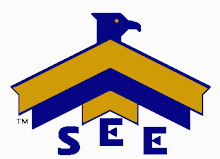The polar opposite of positive feedback is corrective feedback. The purpose of positive feedback is to achieve the replication of a valued event or behavior. Therefore, the purpose of corrective feedback is to reduce or eliminate a poor event or behavior.
Corrective feedback, in large part, is the process of establishing expectations and boundaries for team members. It is not punitive. It is not a form of discipline. It is rather a very direct response to a situation when a team member does not produce or behave in needed areas.
A great disconnect occurs in many organizations because of a hesitancy or fear in providing regular corrective feedback. When asked, team members will pretty universally want to know where they stand. They want to know what they are doing well and what they could do better. In the other corner, many leaders have trepidations and fears associated with providing corrective feedback and would rather defer or save the information for later. Some would rather put it in writing or surprise a team member with the corrective feedback in an annual review.
The remarkable thing about corrective feedback is that the many of the skills and techniques associated with positive feedback are used for corrective feedback. Immediacy in corrective feedback is very important to make sure that the risk of a poor piece of performance or bad behavior is not replicated. In corrective feedback, this risk takes on a multiplier effect because other team members see when a team member errors and is not coached about the event. This could cause greater performance slippage among the team and now you will be coaching multiple people instead of a single team member.
One of the reasons that immediacy of corrective coaching is often missed is because of an avoidance tendency in many leaders. Fearing a confrontation or not wanting to risk their likeability, some leaders will defer a corrective coaching interaction until later. Unfortunately, later rarely happens and some leaders use justifying statements such as “I will talk to her if she does it again” or “the next time he does that, I will talk with him” or “it really wasn’t that big of a deal.” These types of deferrals must be fought off and the feedback must be provided immediately when performance or behavior is unacceptable.
Another shared skill with corrective feedback and positive feedback is using a direct and matter-of-fact communication method. In positive feedback, a direct approach is used to improve clarity and make sure team members understand what they have done well in the most simple terms. With corrective feedback, clarity is also important but directness is used to make sure the leader does not use too many words or paint themselves into a corner. Simply indicate the failure point, iterate the expectation and make sure the message was understood.
In narrative form, that sounds like “Bob, you were late today. I need you here every morning at 8:00am. Are you clear with that?” Or in another form it is “Mary, your report is not accurate. You need to go back and check the numbers in the farthest right columns. This report must be accurate because of the impact it has on our financial statements. Do you understand what I need?”
Some people will look at this type of dialog and perceive harshness. Harsh is a tone element and not the words you use. Direct is necessary to insure the team member clearly understands the intent of the coaching interaction and clearly understands the expectations for performance or behavior. It is not harsh but just direct and to the point.
Subscribe to:
Post Comments (Atom)






No comments:
Post a Comment